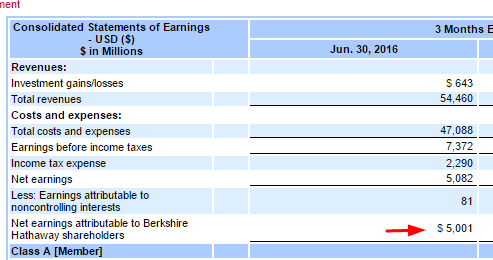
Each of them is used at different times during the full accounting cycle. Notice that this trial balance looks almost exactly like the Paul’s balance sheet except in trial balance format. This is because only balance sheet accounts are have balances after closing entries have been made. Since there are several types of errors that trial balances fail to uncover, each closing entry must be journalized and posted carefully. For example, an unadjusted trial balance is always run before recording any month-end adjustments. Once the adjustments have been posted, you would then run an adjusted trial balance.

This means that there is no error while posting the closing entries to their individual accounts and then listing those account balances on the post-closing trial balance. It ensures that at the end of an accounting period, the sum of the total debits is equal to the sum of the total credits. The post-closing trial balance gives a listing of each permanent account that a company has and its balance.
Post-Closing Trial Balance Purpose
Nominal accounts are those that are found in the income statement, and withdrawals. The primary purpose of preparing this post-closing trial balance is to ensure that all accounts are balanced and ready for recording the next period of financial transactions. A post-closing trial balance is a trial balance which is prepared after all of the temporary accounts in the general ledger have been closed.
- A trial balance is prepared during the accounting period, usually at the end of each month, quarter, or year.
- If you’re using the wrong credit or debit card, it could be costing you serious money.
- The purpose of the post-closing trial balance is to ensure the accuracy of the accounting records for a specific accounting period, typically a month, quarter or year.
- A post-closing trial balance is a listing of all balance sheet accounts containing non-zero balances at the end of a reporting period.
The articles and research support materials available on this site are educational and are not intended to be investment or tax advice. All such information is provided solely for convenience purposes only and all users thereof should be guided accordingly. Mary Girsch-Bock is the expert on accounting software and payroll software for The Ascent. By summing the debits together, and the credits together, we see that each reconcile to $2,120 in August. Carbon Collective partners with financial and climate experts to ensure the accuracy of our content.
Equity
This makes certain the next accounting cycle’s beginning balances are accurate. The post-closing trial balance is a report that is created to verify all of a company’s temporary accounts are closed and their new beginning balance has been reset to zero. For companies that use accounting software, this will be done automatically. But for those using spreadsheets or ledgers to manually record accounting transactions, it’s essential to make sure each temporary account balance is set to zero when the new accounting period begins. The purpose of a post-closing trial balance is to ensure that all the individual account balances match the debit and credit columns.
RNA biotech ADARx hauls in healthy $200M series C – FierceBiotech
RNA biotech ADARx hauls in healthy $200M series C.
Posted: Wed, 09 Aug 2023 14:31:53 GMT [source]
At that time, the accounts will be closed to permanent accounts and once again have a zero balance. The post-closing trial balance is the last trial balance to be prepared before the next accounting period begins. It is useful for making sure the next period’s beginning balances are accurate.
The Post‐Closing Trial Balance
The unadjusted trial balance is the first trial balance that you’ll prepare, and it should be completed after all entries for the accounting period have been completed. If you’re not using accounting software, consider using a trial balance worksheet, which can be used to calculate account totals. In the first and second closing entries, the balances of Service Revenue and the various expense accounts were actually transferred to Income Summary, which is a temporary account. The Income Summary account would have a credit balance of 1,060 (9,850 credit in the first entry and 8,790 debit in the second). The purpose of the trial balance is to check the mathematical accuracy of the accounting records and ensure that the total debits equal the total credits.

At this point in the accounting cycle, all the temporary accounts have been closed and zeroed out to permanent accounts. Therefore, a post-closing trial balance will include a list of all permanent accounts that still have balances. Since most trial balances do not list accounts with zero balances, the post-closing trial balance will include only general ledger balance sheet accounts having balances other than $0.00. The debit and credit amount columns will be summed and the totals should be identical. Post-closing trial balance – This is prepared after closing entries are made.
Many students who enroll in an introductory accounting course do not plan to become accountants. They will work in a variety of jobs in the business field, including managers, sales, and finance. Accounting software can perform such tasks as posting the journal entries recorded, preparing trial balances, and preparing financial statements. Students post closing trial balance often ask why they need to do all of these steps by hand in their introductory class, particularly if they are never going to be an accountant. If you have never followed the full process from beginning to end, you will never understand how one of your decisions can impact the final numbers that appear on your financial statements.
What is a Post-Closing Trial Balance?
Our writing and editorial staff are a team of experts holding advanced financial designations and have written for most major financial media publications. Our work has been directly cited by organizations including MarketWatch, Bloomberg, Axios, TechCrunch, Forbes, NerdWallet, GreenBiz, Reuters, and many others. Our goal is to deliver the most understandable and comprehensive explanations of climate and finance topics.
ResMed stock slides near 2-year low despite 18% revenue rise – FierceBiotech
ResMed stock slides near 2-year low despite 18% revenue rise.
Posted: Mon, 07 Aug 2023 15:53:49 GMT [source]
At this point, the balance of the capital account would be 7,260 (13,200 credit balance, plus 1,060 credited in the third closing entry, and minus 7,000 debited in the fourth entry). Before that, it had a credit balance of 9,850 as seen in the adjusted trial balance above. There are three different types of trial balances used in accounting.
A post-closing trial balance is the final trial balance prepared before the new accounting period begins. Used to make sure that beginning balances are correct, the post-closing trial balance is also used to ensure that debits and credits remain in balance after closing entries have been completed. Since temporary accounts are already closed at this point, the post-closing trial balance will not include income, expense, and withdrawal accounts. It will only include balance sheet accounts, a.k.a. real or permanent accounts. Adjusted trial balance – This is prepared after adjusting entries are made and posted. Its purpose is to test the equality between debits and credits after adjusting entries are prepared.
The post-closing trial balance, the last step in the accounting cycle, helps prepare your general ledger for the new accounting period. It closes out balances in both expense and revenue accounts, which allows you to start tracking these totals again in the new accounting period. All businesses have adjusting entries that they’ll need to make before closing the accounting period. These adjusting entries include depreciation expenses, prepaid expenses, insurance expenses, and accumulated depreciation.
The post-closing trial balance should be prepared at the end of a period. Post-closing trial balances are completed before a new accounting period begins. It is used to ensure the balances are correct before entering into the new period. Preparing the post-closing trial balance will follow the same process as the adjusted trial balance, but with one additional step.
- Like other trial balances, the post-closing trial balance doesn’t list the accounts with zero balances.
- There are some business transactions, such as accruals and prepayments that have to be adjusted at the end of each accounting period.
- Much of our research comes from leading organizations in the climate space, such as Project Drawdown and the International Energy Agency (IEA).
Like an unadjusted or an adjusted trial balance, it will have accounts listed in order of either their account numbers or in the order they appear on the balance sheet. The order that will follow will be assets first, then liabilities and finally ending off with equity. The post-closing trial balance report lists down all the individual accounts after accounting for the closing entries.
When the post-closing trial balance is run, the zero balance temporary accounts will not appear. However, all the other accounts having non-negative balances are listed, including the retained earnings account. As with the trial balance, the purpose of the post-closing trial balance is to ensure that debits equal credits. The post-closing trial balance contains all accounts that are currently recorded in the general ledger. The balances for each account are added together to show that the debit and credit balance is equal.
This makes sure that your beginning balances for the next accounting cycle are accurate. A post-closing trial balance is, as the term suggests, prepared after closing entries are recorded and posted. It is the third (and last) trial balance prepared in the accounting cycle.